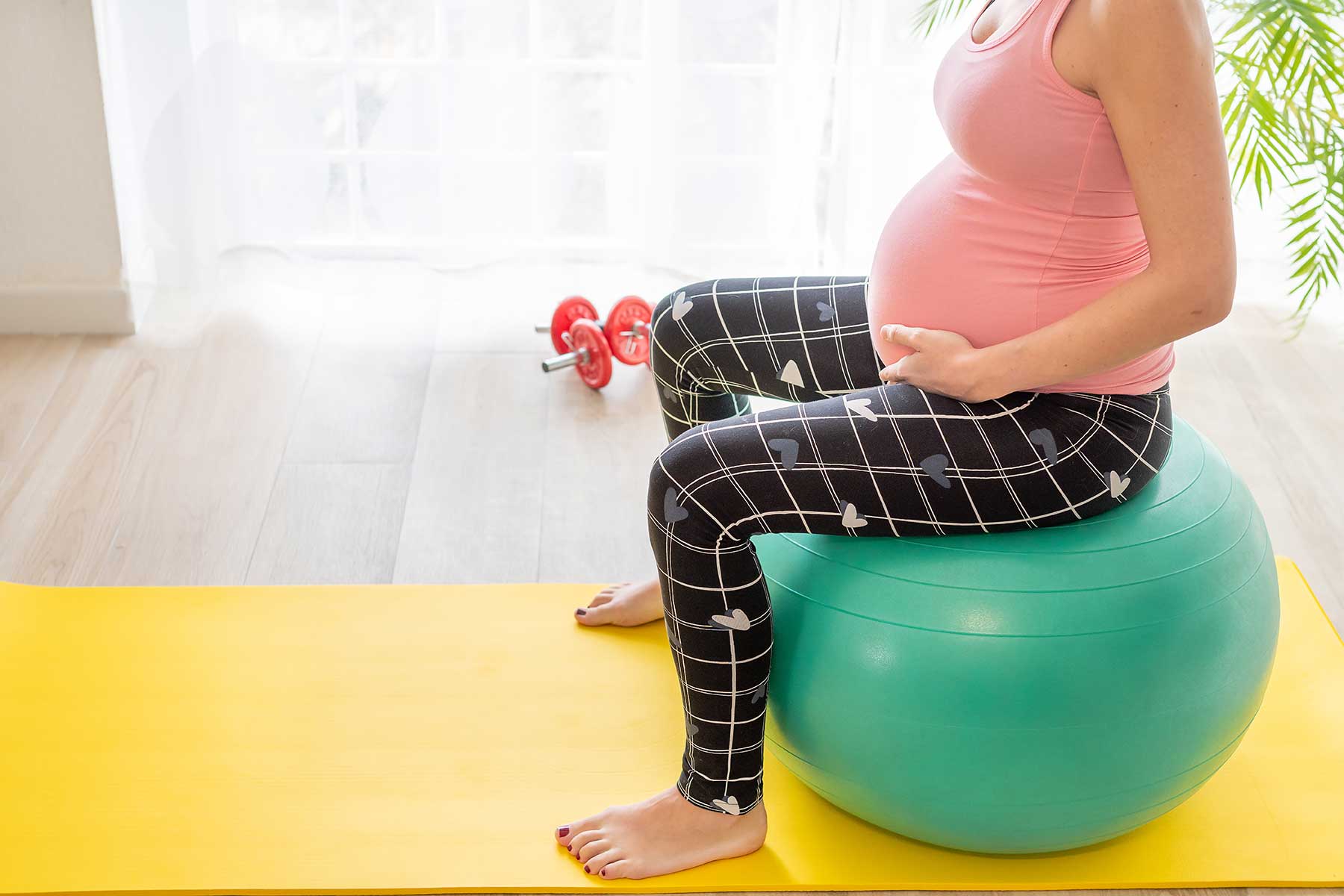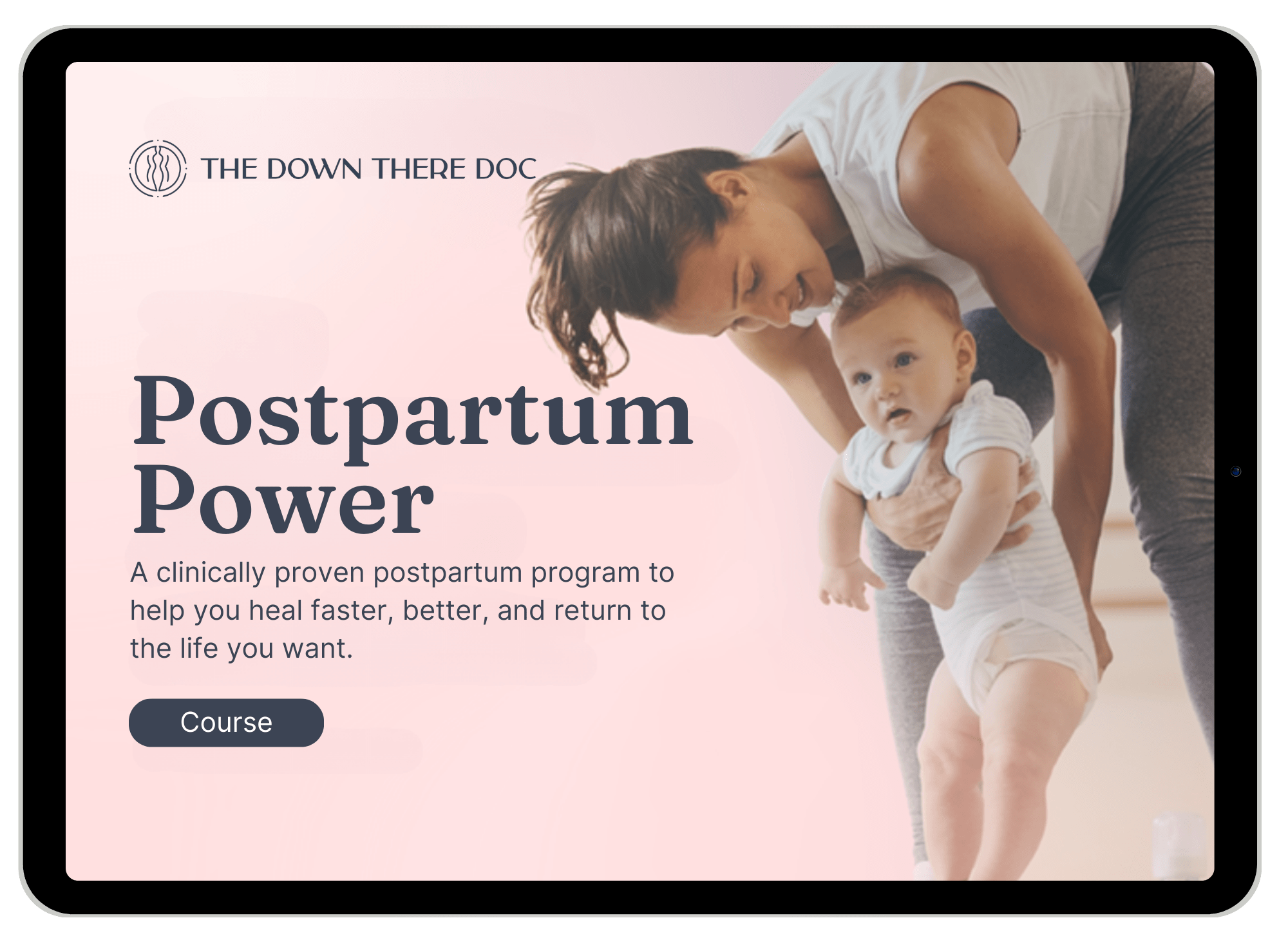First, let’s go over what the pelvic floor is and what it does
The pelvic floor muscles are a hammock of muscles that sit at the bottom of the pelvis. They sling front to back and side to side (pubic bone to tailbone, and sit-bone to sit-bone).
The pelvic floor muscles have 3 main functions:
- Support – They hold our pelvic organs, baby, uterus, placenta, etc
- Continence – Keeping us dry
- Sexual – Aid in orgasm and help to allow penetration into the vaginal canal
These are famously known as our “kegel” muscles, and they are made up of the same stuff as our biceps or hamstrings: skeletal muscle.
That being said, the pelvic floor muscles are at the same risk for muscle injury or overuse or trauma just like any muscle in our body. And pregnancy and delivery put a huge amount of demand and strain on them, which is why we see such a high rate of leaking urine, pain, pelvic organ prolapse, and muscle weakness after the baby.
See Also

The 3 Main Functions of the Pelvic Floor
Continence
The pelvic floor muscles work to close down the urethra (tube where pee comes out), and rectum (tube where poop comes out), as the bladder and rectum are filling.
The muscles turn on to make sure pee or poop isn’t coming out until we can get to a bathroom. Once we are in the bathroom and ready, the muscles relax, urine can flow out, and poop can exit.
Support
Because the pelvic floor muscles are the floor of the core, they are the main support structure for our pelvic organs, and for the baby when we are pregnant. They hold us and everything in us, up against gravity.
Sexual Function
The first layer of muscles attaches to the side of the clitoris and helps with the rhythmic contraction during orgasm. The muscles also have to lengthen and relax in order to allow penetration, either rectally or vaginally.
How Pregnancy and Childbirth Impact Your Pelvic Floor
I think of pregnancy, labor, and delivery as a truly athletic event, requiring skilled and comprehensive rehabilitation. Just like an athlete would need if she or he tore a muscle in his or her shoulder, or ruptured their ACL playing soccer.
Pregnancy and birth can take a major toll on us, and we are asking our bodies to perform feats of strength, endurance, and raw power over a course of 9 months. That’s a long time!
Those muscles have to work overtime for 9 months, then have to stretch to the circumference of the pelvic bowl to allow baby to come out vaginally (are often torn in the process) and then have to “come back” to the level of function there were at before.
When you think about it compared to any other type of surgery or trauma, you can really see the discrepancies that mothers face in the recovery period.
What is Pelvic Floor Dysfunction?
1 in 4 women experience pelvic floor dysfunction after having a baby (either delivered through the sunroof or the lobby, it doesn’t matter), and that can consist of these lovely, common, BUT NOT NORMAL symptoms:
- Leaking urine, stool, or gas
- Pelvic/genital pain
- Pelvic organ prolapse
- Scar pain
- Painful sex
- Abdominal weakness
Often the message that women receive after having a baby when they report these issues is, “Welp! You just had a baby, what do you expect? This is how it is now!”
Which, in so many words, is baloney. Let’s delve deeper into the pelvic floor and what we need to be doing for our vaginas.
How a Pelvic Floor PT can help you
What is needed to recover from birth to prevent, treat, and manage dysfunction?
A pelvic floor PT on your team, and if you can’t access a pelvic floor PT, had a bad experience, insurance won’t cover it, or you can’t find one or get in, joining our online program and community is 100% necessary!
PFM probs don’t go away on their own, and it’s never too late to address them.
What’s the alternative?
Most often the mainstream message women are given is this: this is part of life now and the only solutions are surgery, medications, and diapers. And the success rates for these aren’t great, and most often require revisions and lengthy recovery times. Now, in some cases, yes, surgery is warranted, but in most cases, a lot of these issues can be managed and treated with physical therapy.
Don’t let this info scare you
It’s okay to be a little worried but don’t let this info scare you! With new knowledge comes a way to get ahead of it. The old way to handle pelvic floor dysfunction was to just deal with it as it gets worse.
The new way: starting now, and getting a comprehensive plan for recovery and treatment.
And The Down There Doc can help you start!
Check out my courses and free resources to get started!




